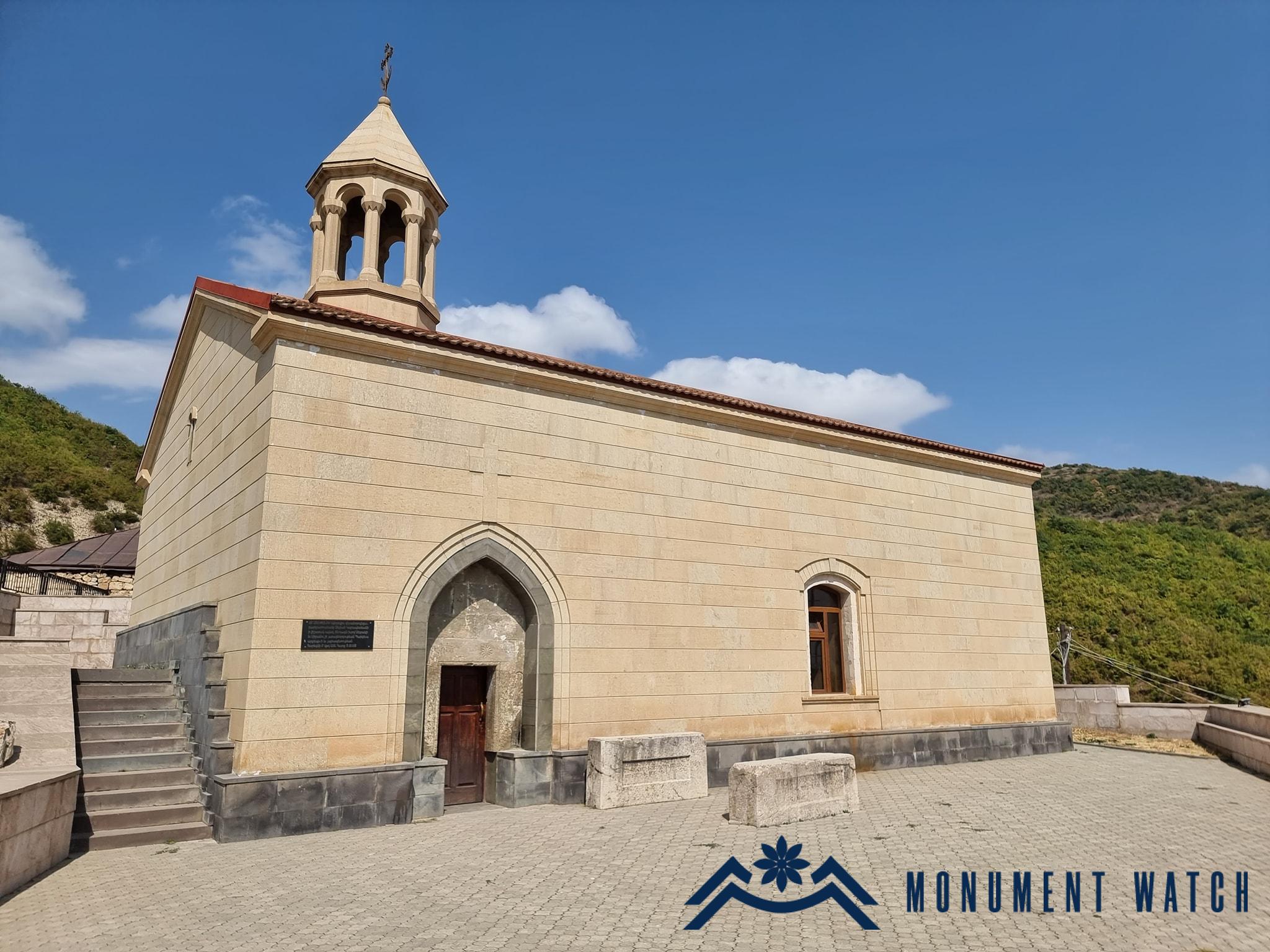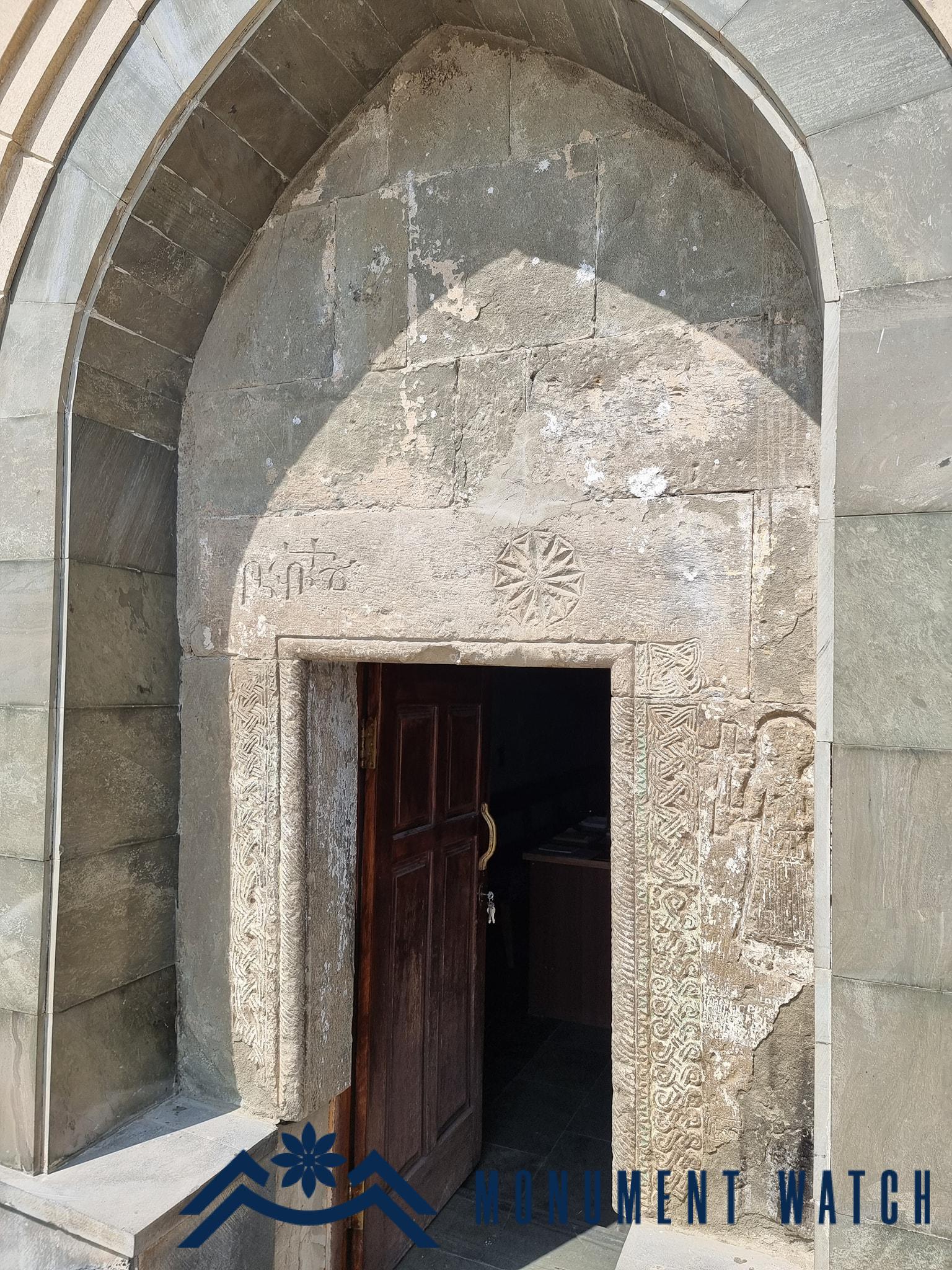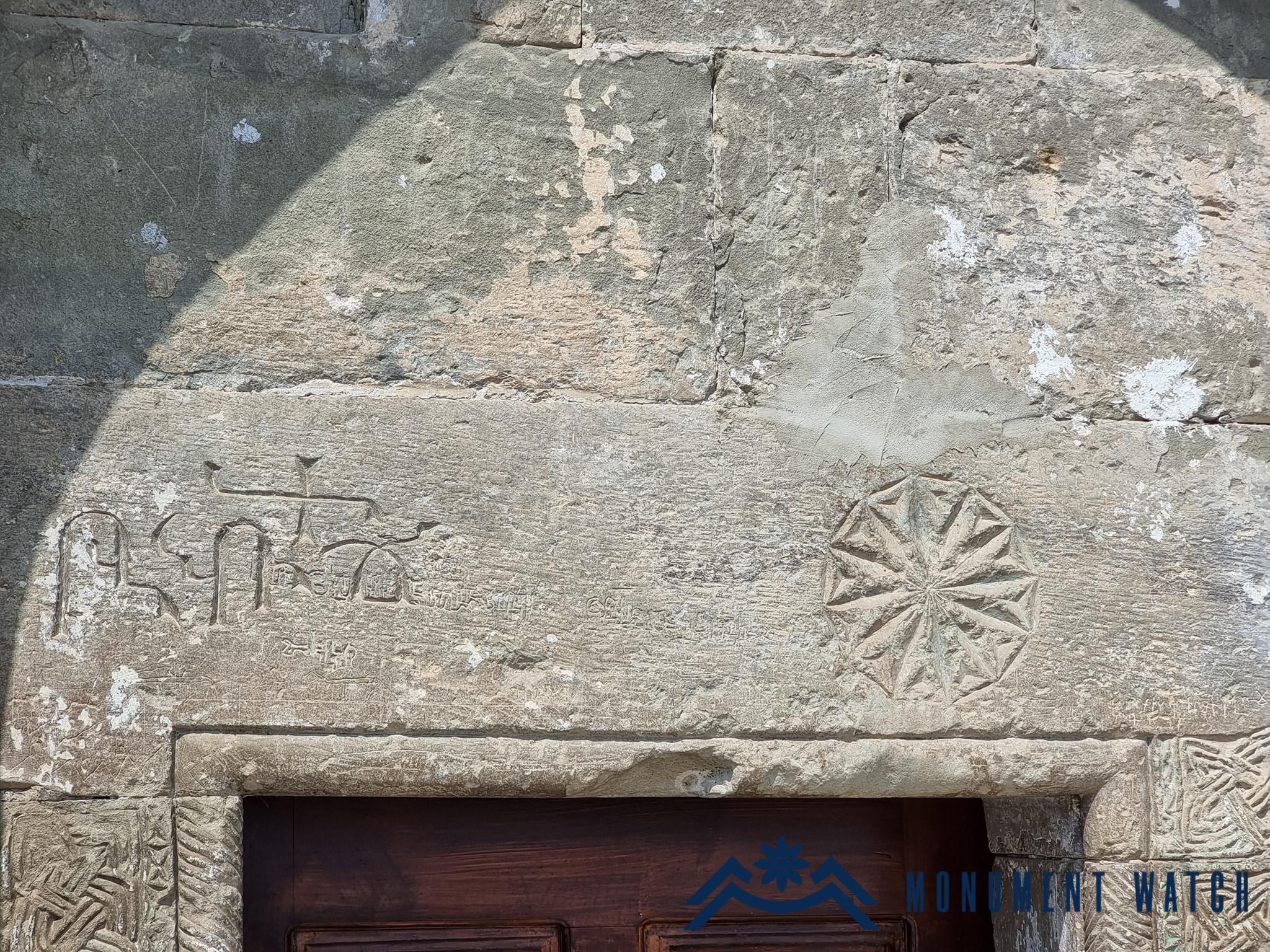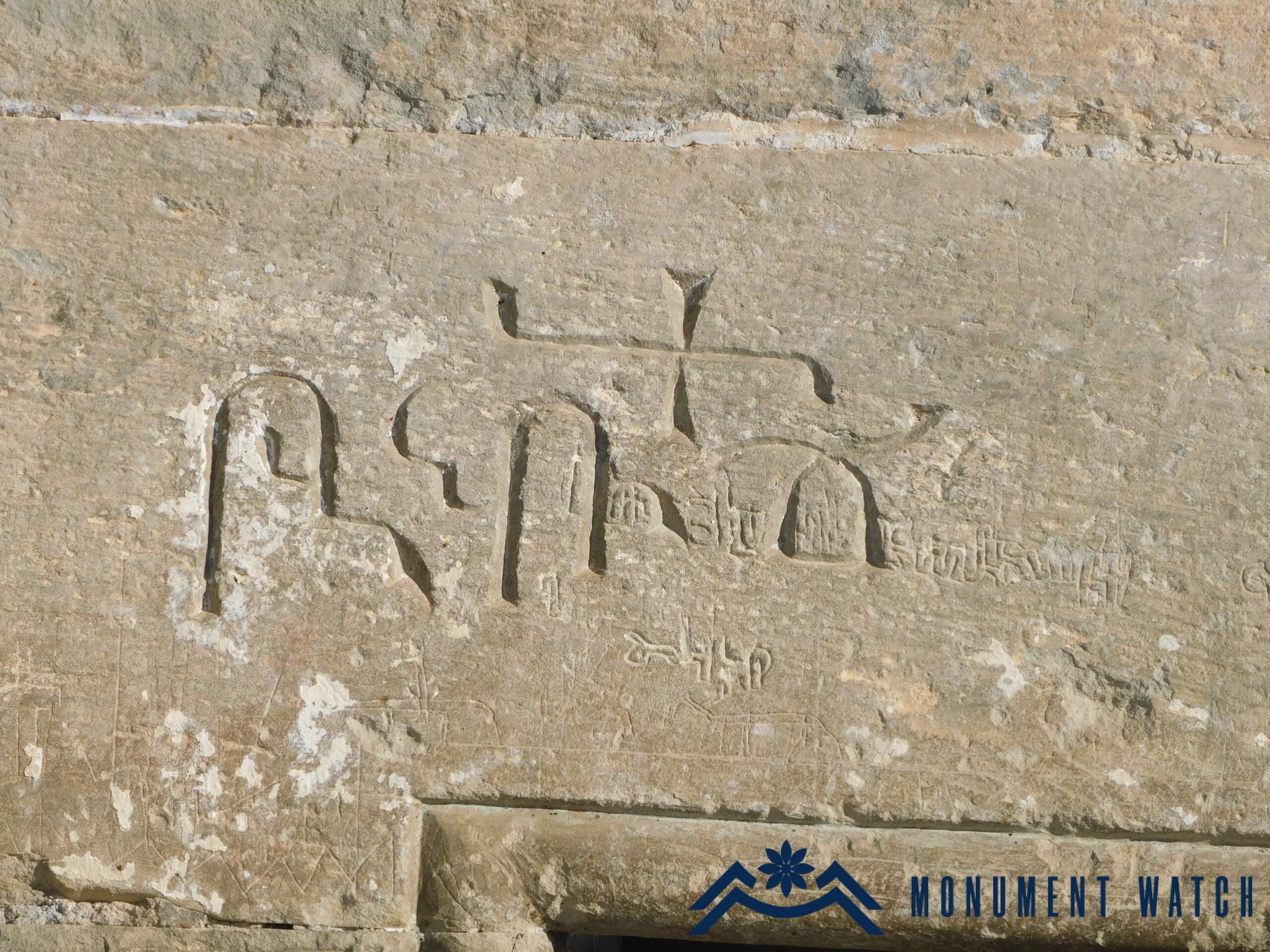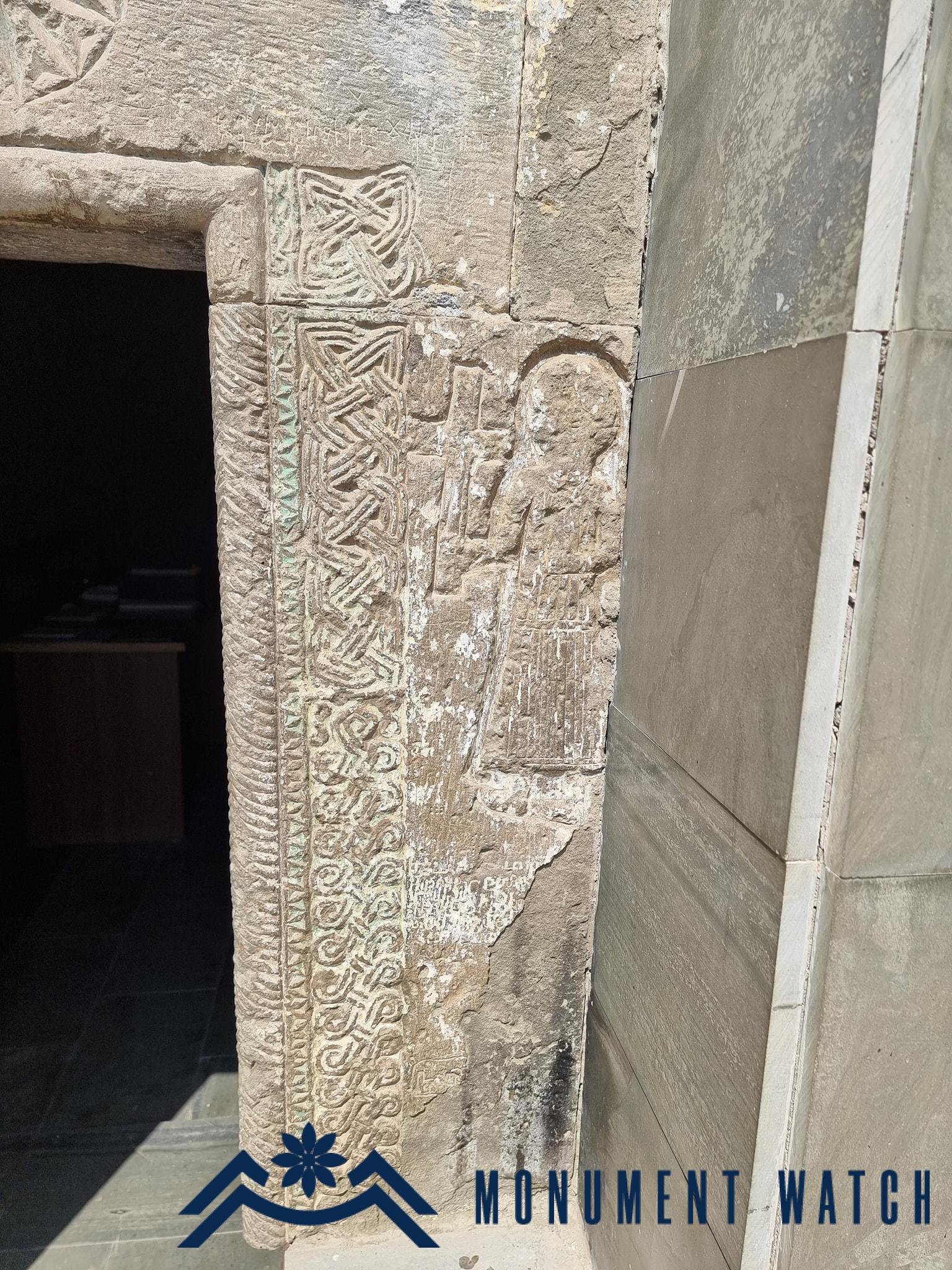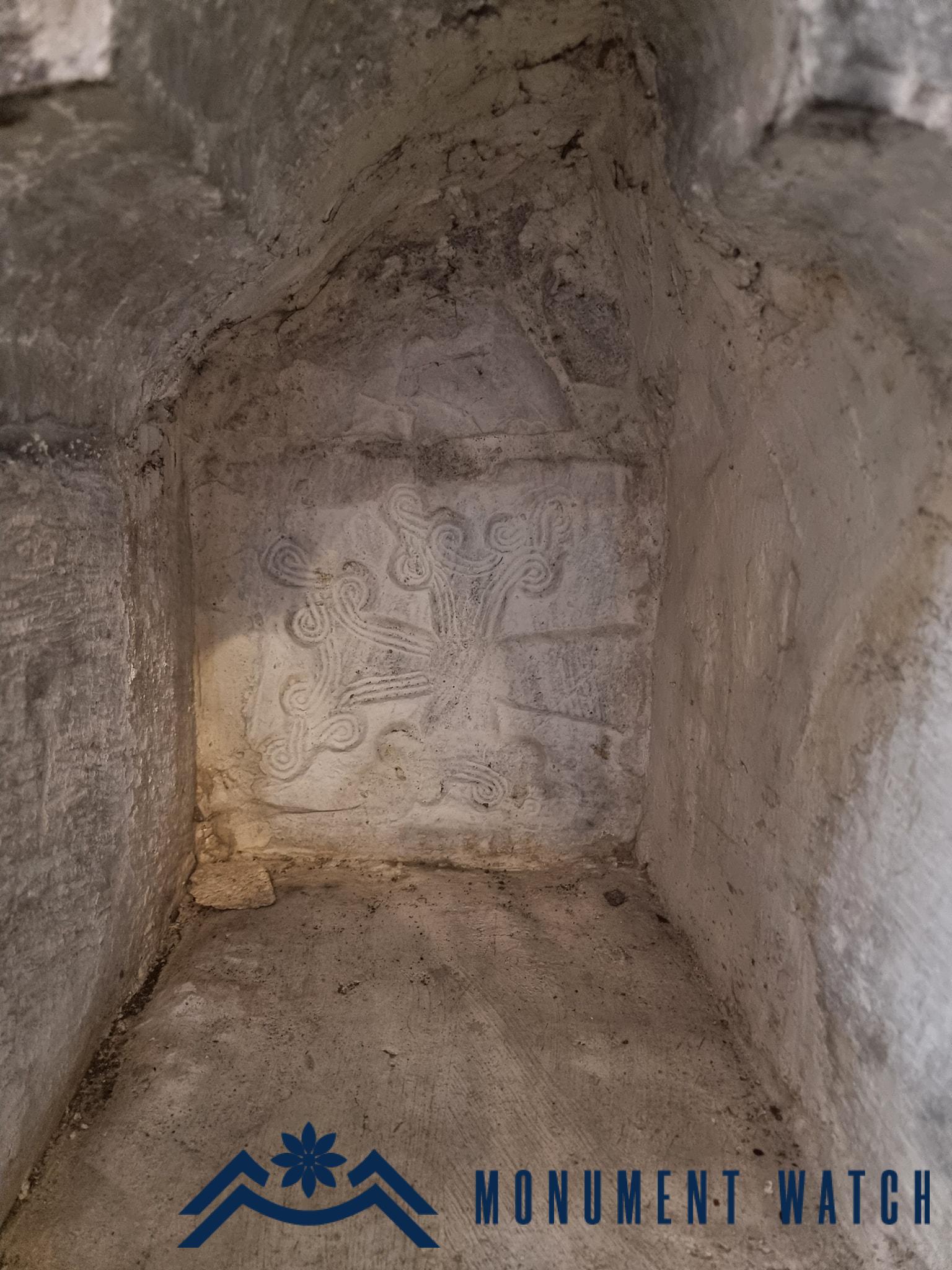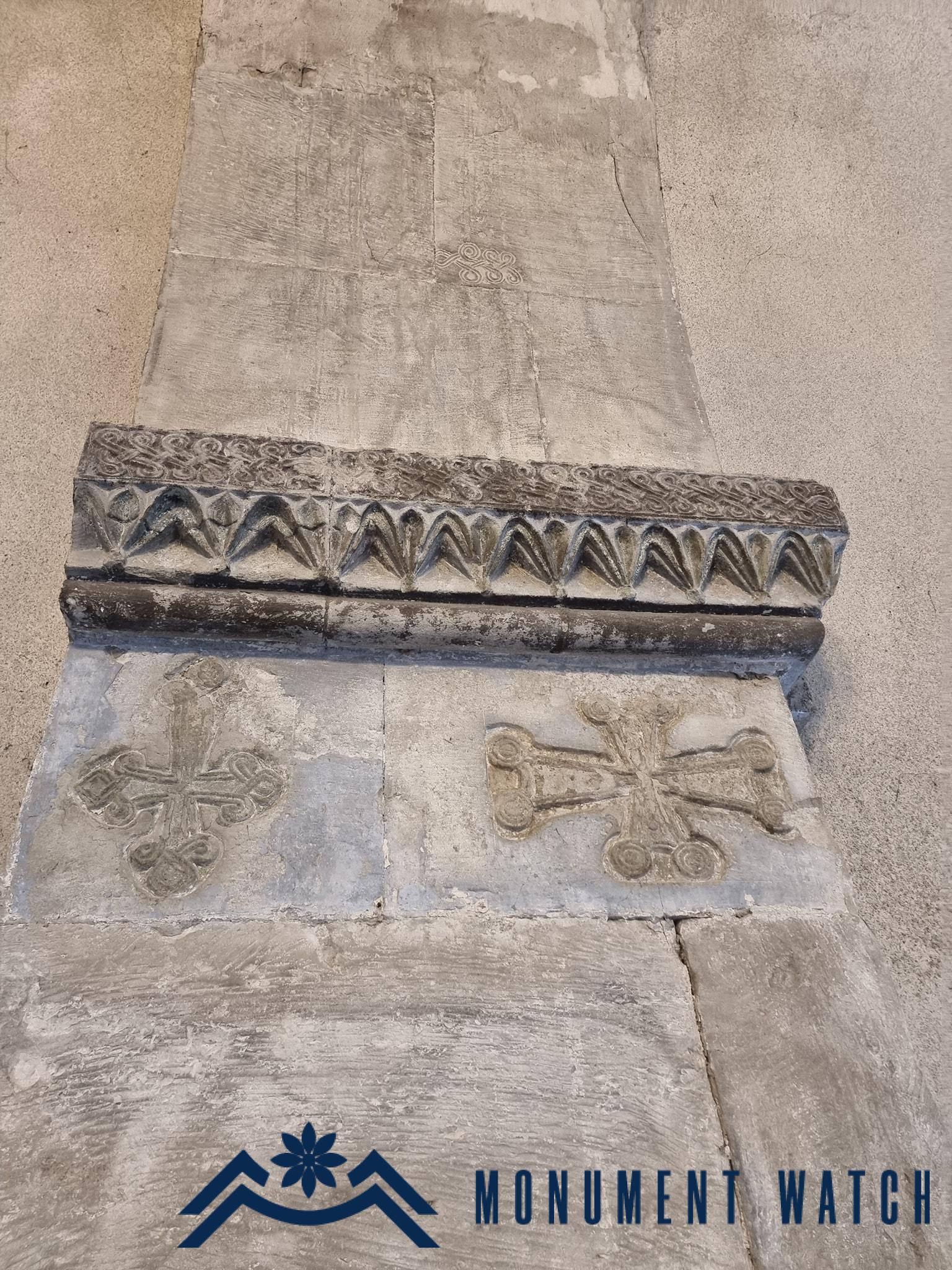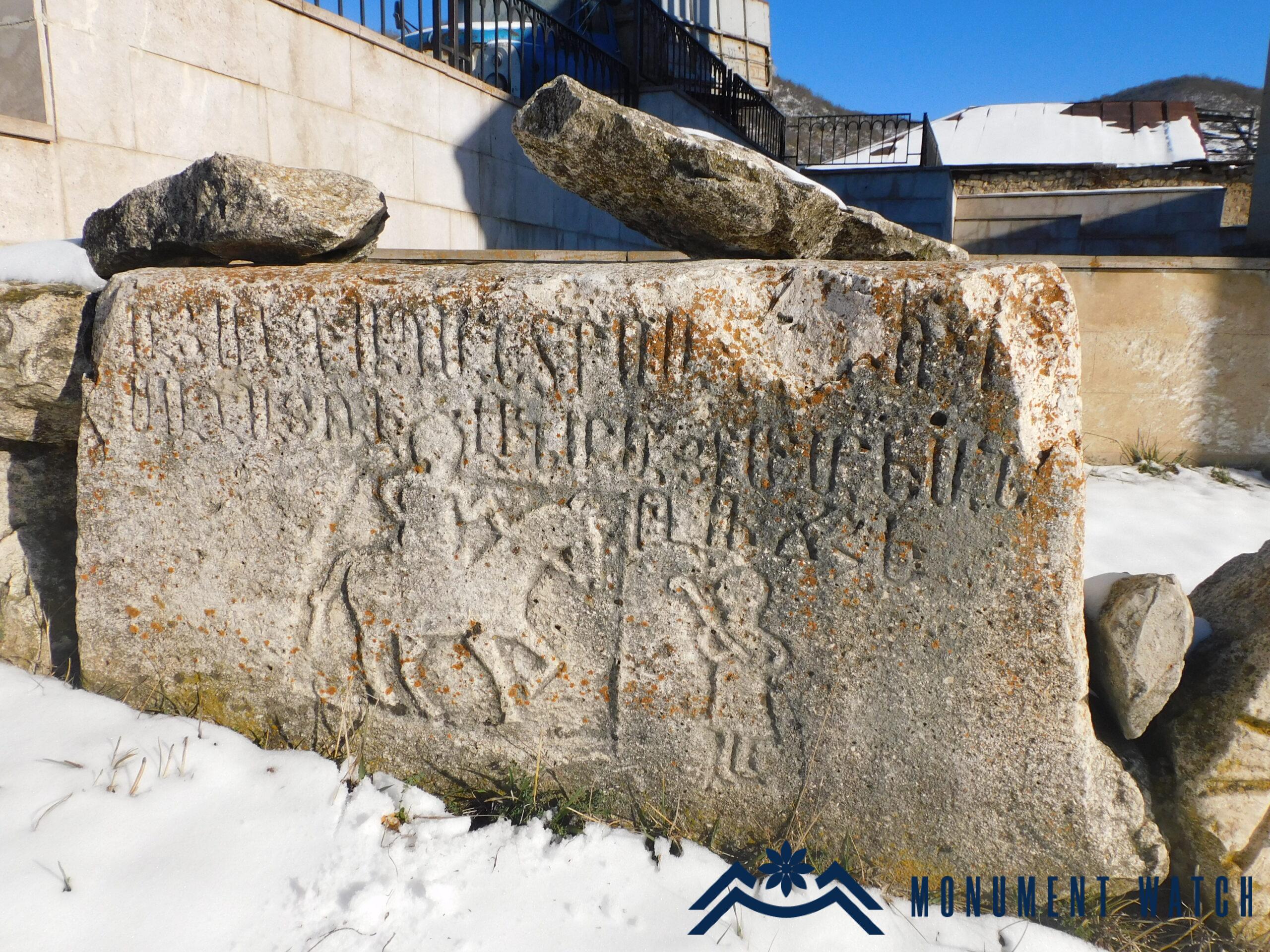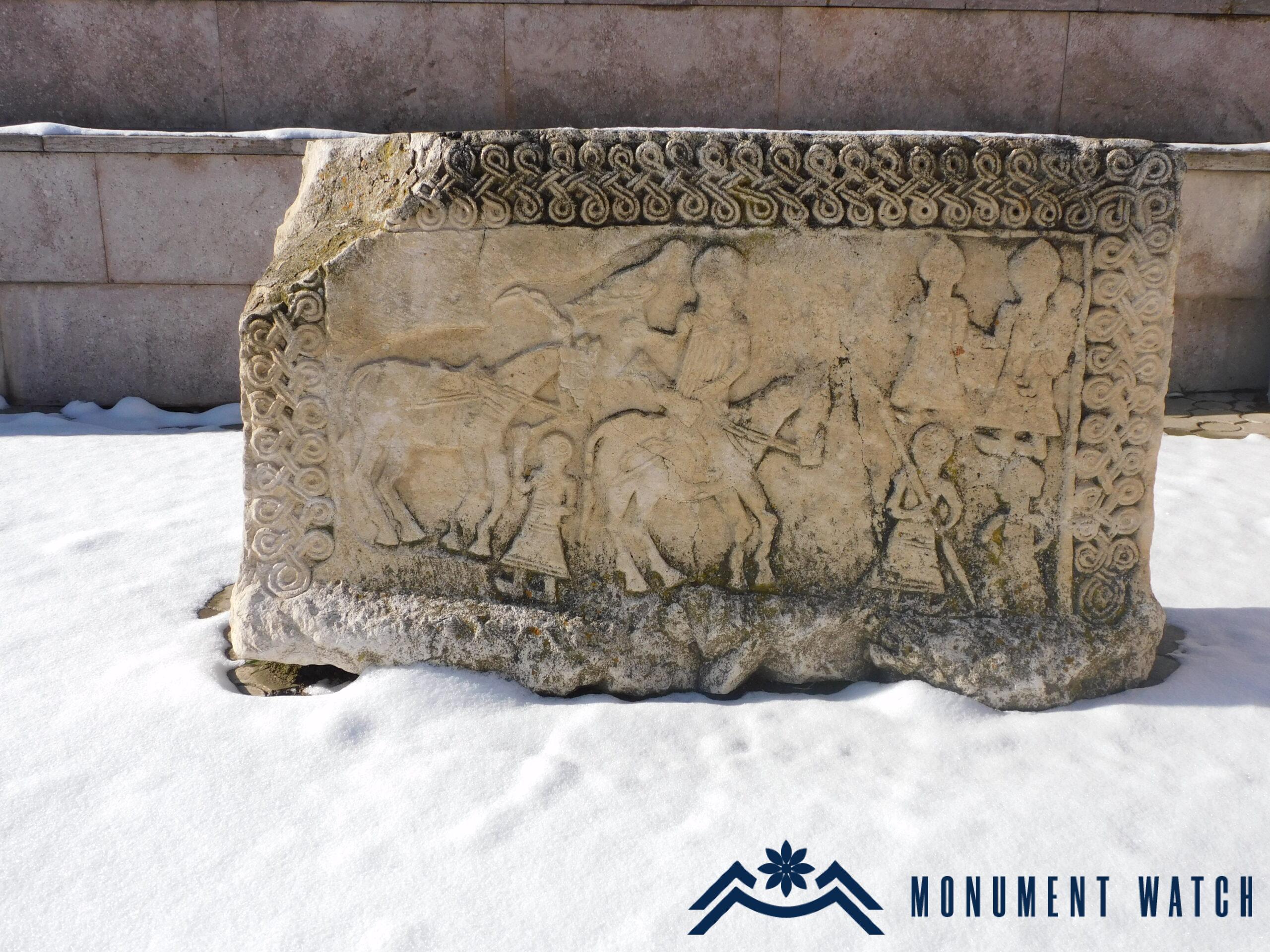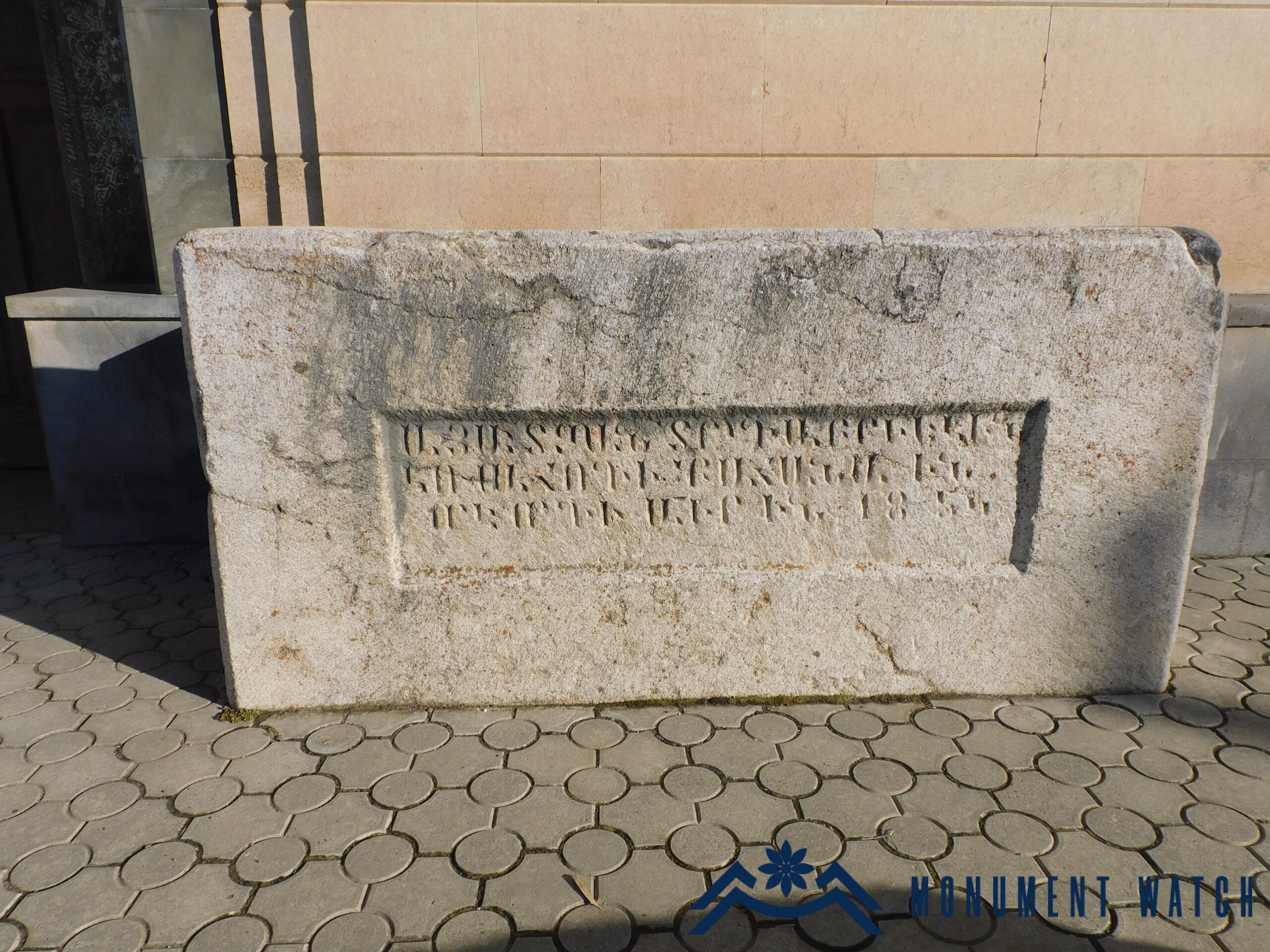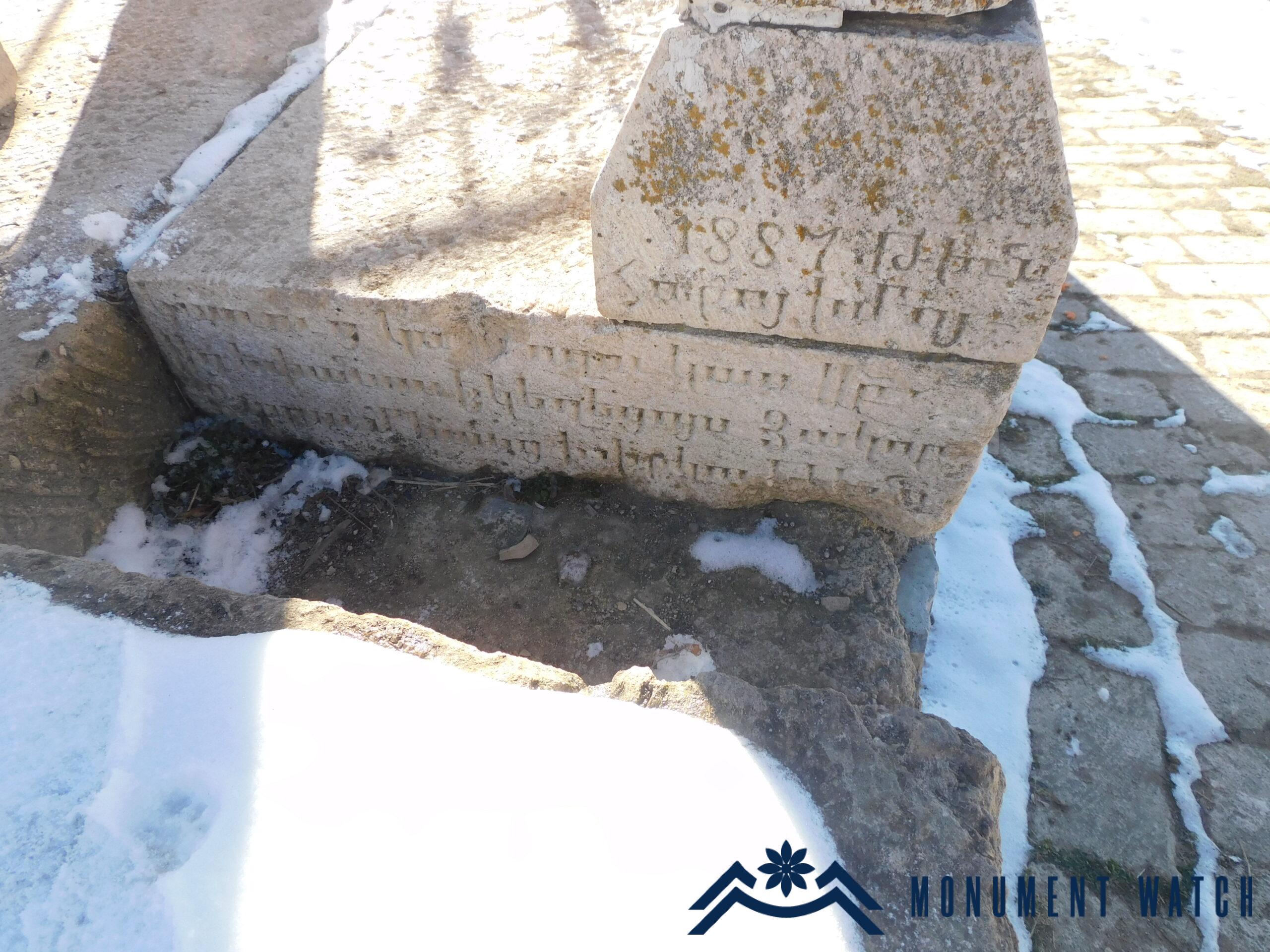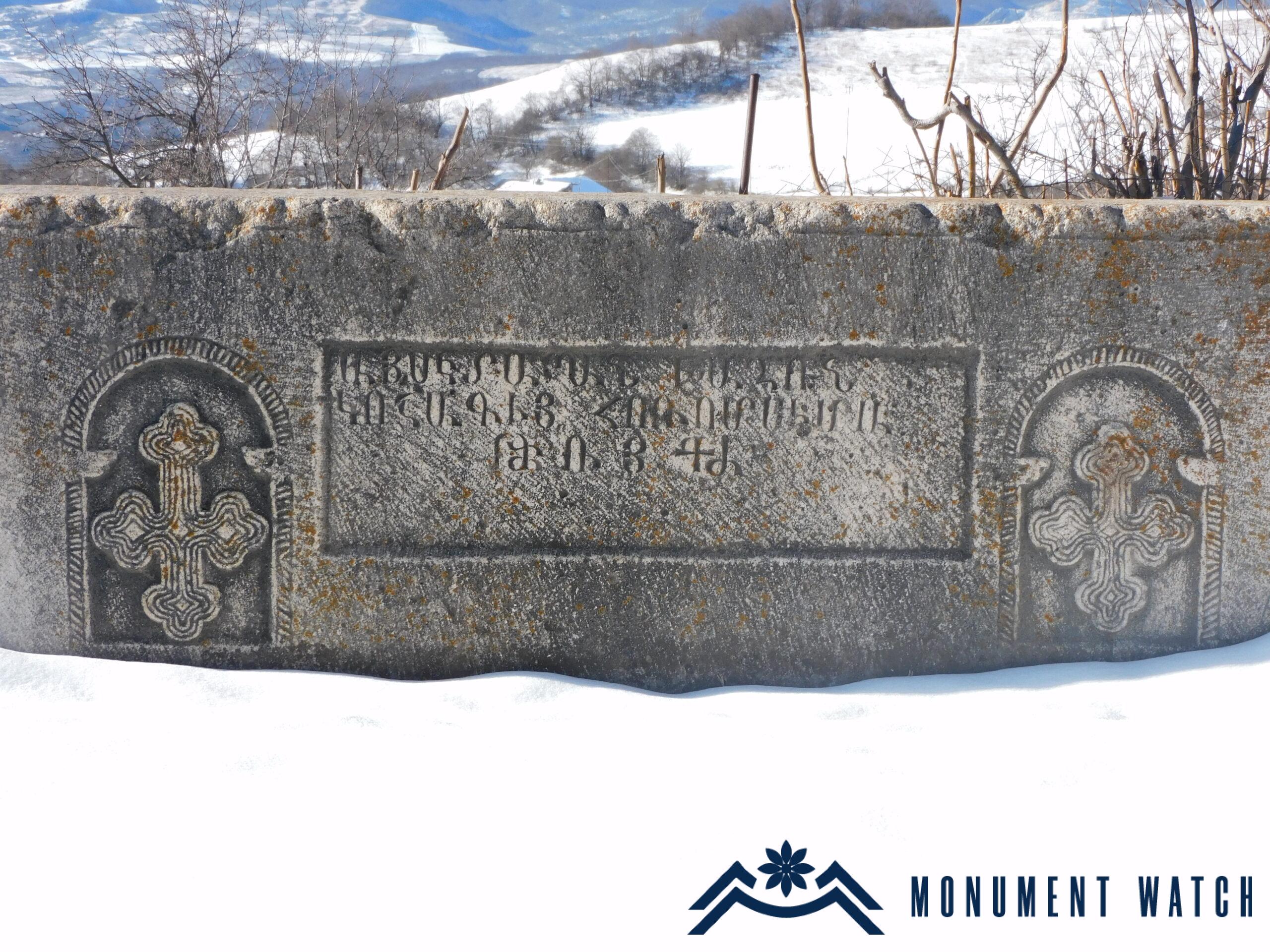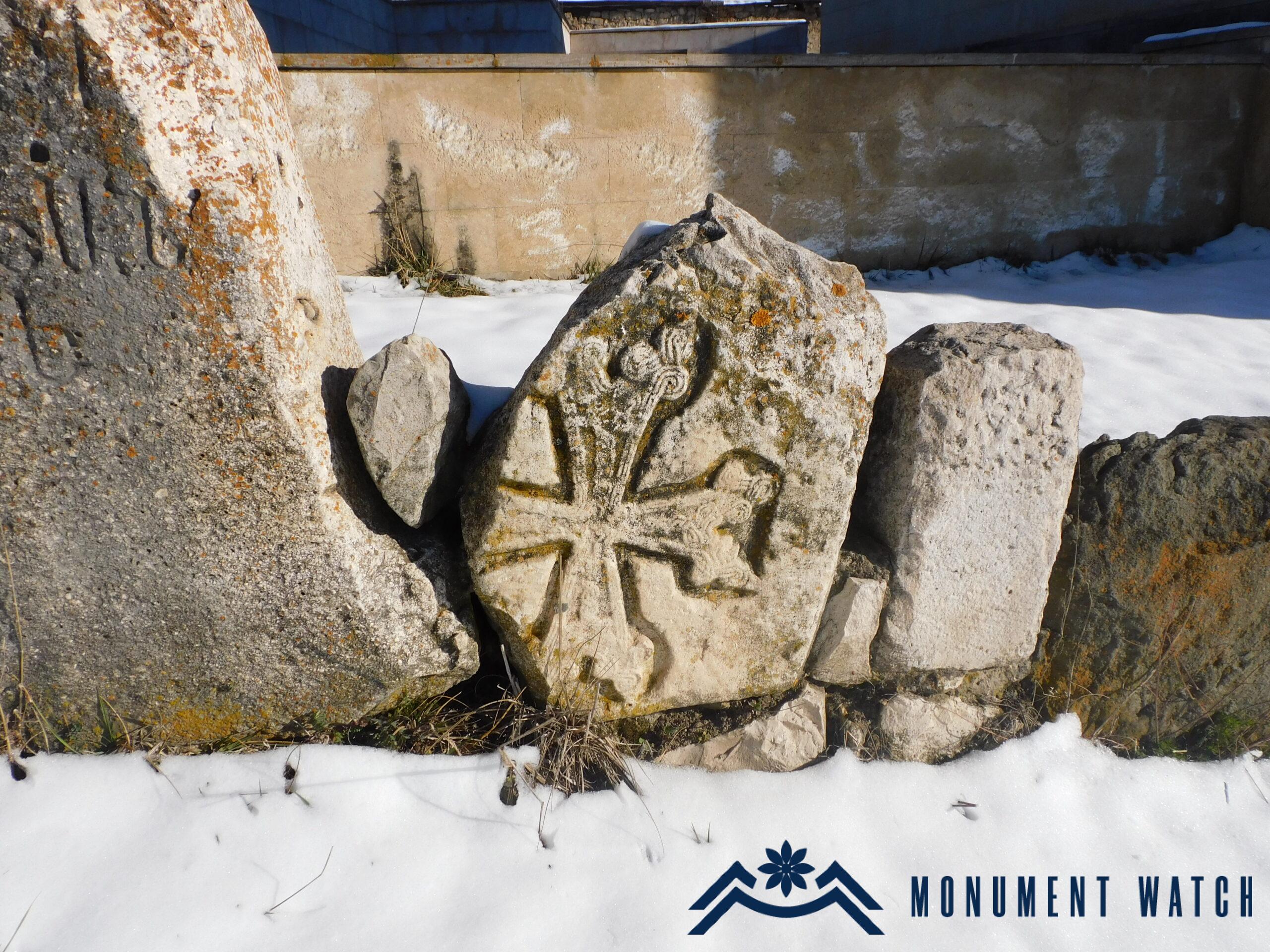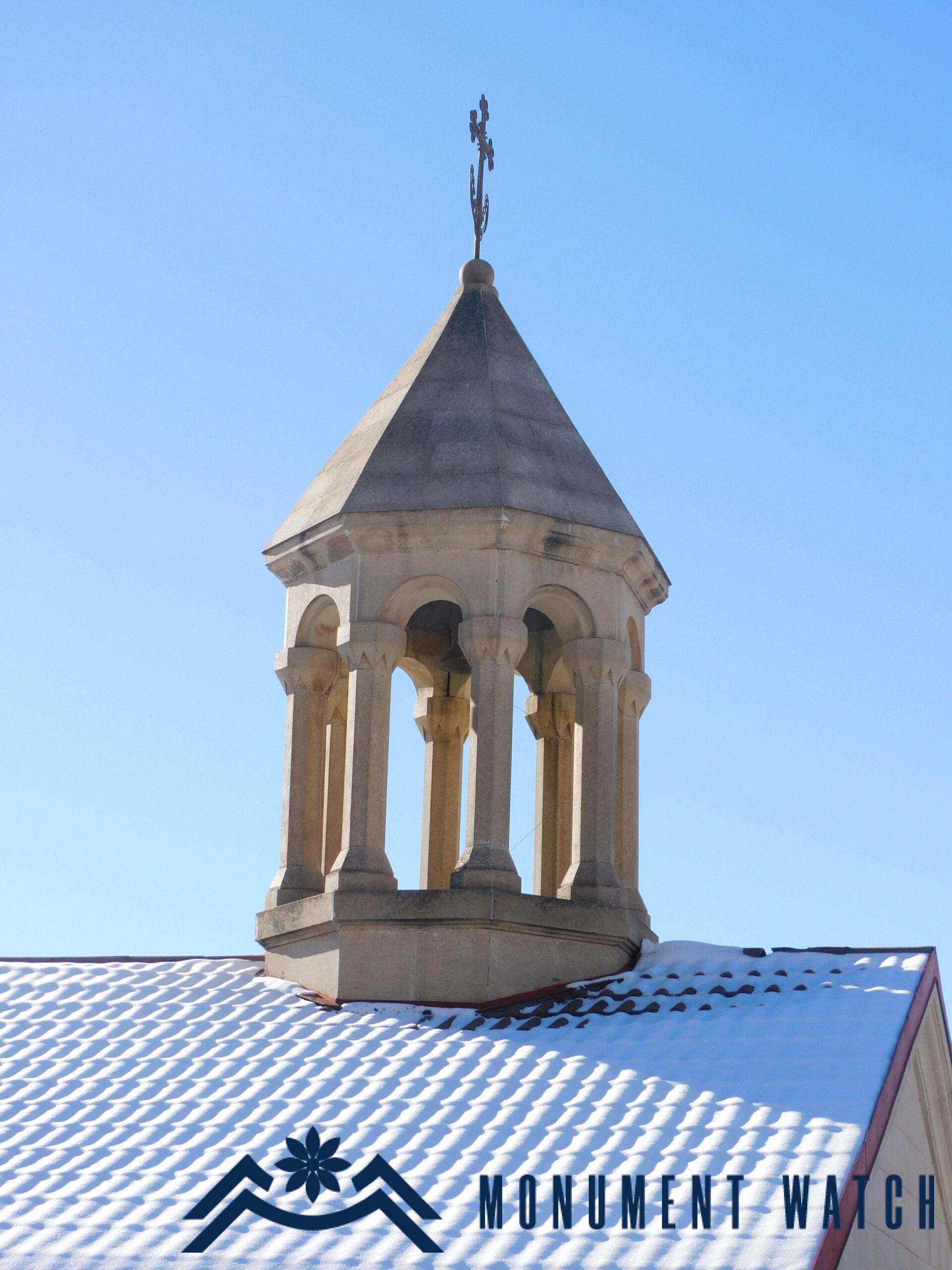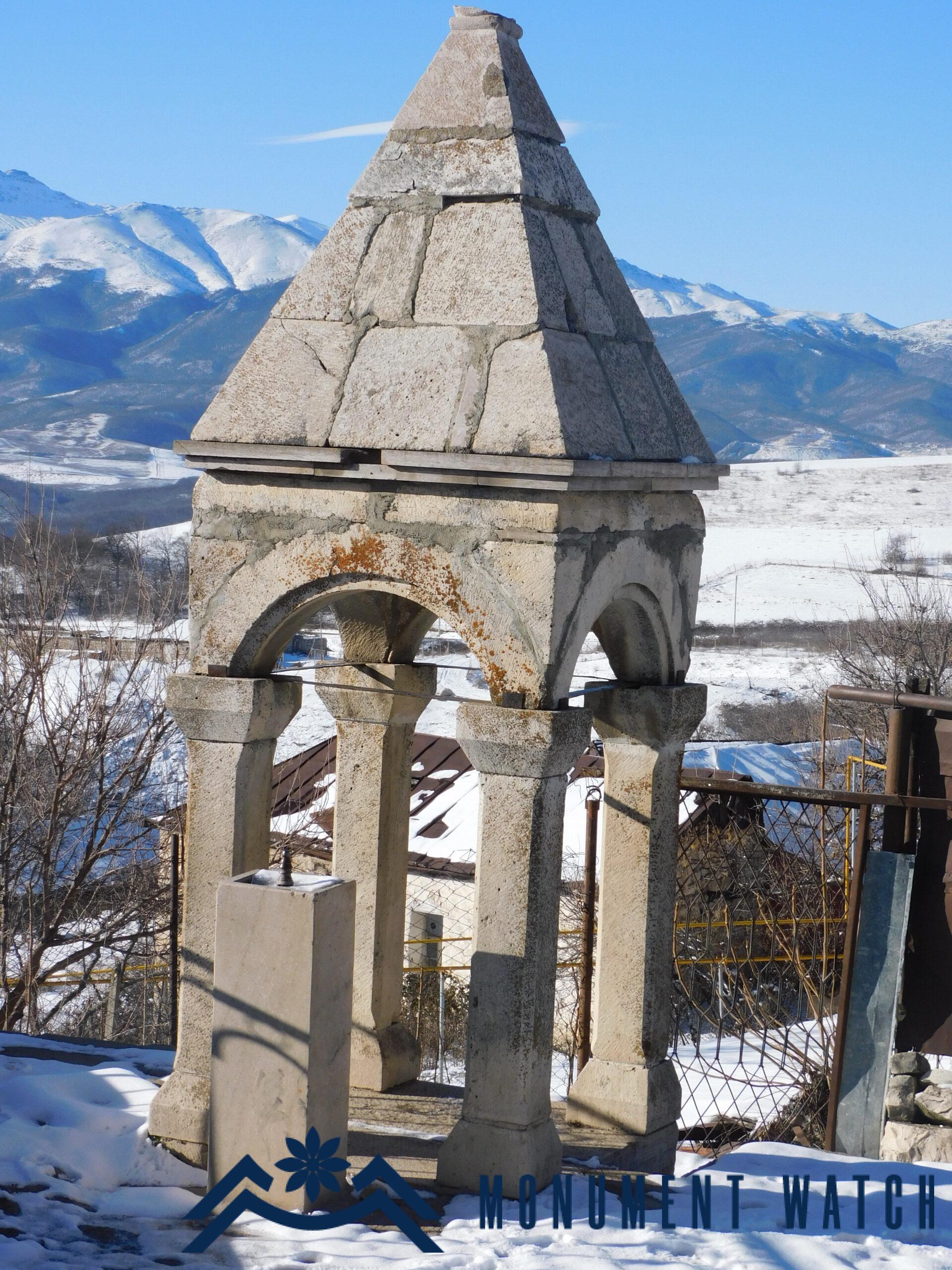The Surb Stepanos church of Khachmach
Location
The Surb Stepanos Church of Khachmach is situated in the Askeran region of the Republic of Artsakh, at the heart of the village bearing the same name (Fig. 1).

Historical overview
According to the inscription on the door (Fig. 2), the Surb Stepanos Church was constructed “in the year 1651” (Figs. 3, 4). Usta Hovsep is mentioned as the builder of the church. Makar Barkhudaryants writes in his work "Artsakh": "... the church of Surb Stepannos built on an arch without columns, which has a small main church (Katoghike), with a length of 13 meters and 90 centimeters and a width of 9 meters and 32 centimeters. On the east side of the door, an inscription is engraved." "I, Usta Yusep, and Georg built this church as a memorial. May God have mercy on whoever sees it”
The year 1651 is engraved on the facade stone of the door (Barkhudaryants 1895, 200, cf. CAE 1982, 159). Unfortunately, the original construction inscription has not survived to this day.
Architectural-compositional examination
The church is a rectangular single-nave vaulted hall. It is constructed using a combination of large and small stones held together with mortar. The porch on the south wall is made from polished slabs, some of which serve as tombstones. One of these tombstones bears an engraving depicting the deceased person holding a cross in their hand (Fig. 5). Additionally, a large window on the south facade was added, likely during the 19th century or the Soviet era. The church's vault is supported by arches rising from a pair of pillars located on the north and south walls. These pillars are adorned with stalactite-worked containers dating back to the 17th and 18th centuries. Inside the church, particularly on the wall near the baptismal font, you can find khachkars (cross-stones) and stones featuring cross designs (fig. 6-8). Additionally, a belfry is situated on the roof towards the western side of the church. In the churchyard, several tombstones can be found.
One of these tombstones is intricately carved with figures of a horseback rider and a pedestrian carrying a crook on his shoulder. An inscription on the tombstone reads: "This is the tombstone of Ter Sahak, son of Saghatel, and mother Maria. (Year 1726)" (Fig. 9). The next tombstone is engraved with the inscription: "This is the tombstone of Lord Gabriel, the late priest, who is the son of Amir. 1854." On another tombstone, it reads: "This is the tombstone of Khachun, spouse of Horomsime, in 1881." (Figs. 10, 11).The tombstone from the 17th-18th centuries on the southern side of the church stands out with its hunting and family "portrait" sculptures (Fig. 12). Additionally, in the churchyard, there are inscription stones that bear witness to the church's renovation (Fig. 13). You can also find fragments of khachkars and various stones with ornaments in the courtyard of Surb Stepanos Church (Fig. 14).
The condition before and after the war
The church in the village and its surrounding areas were restored in 2007 with funds provided by the philanthropist Seyran Karapetyan, as indicated by the inscription on the wall at the church's entrance https://artsakhtert.com/arm/index.php/social/item/29335-2020-07-23-06-38-54.
During the renovation, the entire structure of the church, including the roof, was reinforced. However, the walls were entirely covered with white polished slabs, and the lower rows were replaced with basalt. This alteration changed and disrupted the historical appearance of the structure. Additionally, the old belfry structure on the roof was dismantled and replaced with a new one (Fig. 15). The old belfry is now situated at the entrance to the churchyard (Fig. 16).
During the 44-day war of 2020, the village of Khachmach was subjected to bombings, but the church structure remained undamaged.
Bibliography
- Barkhutareants 1895 - Barkhutareants M., Artsakh, Baku.
- AE 5 - Corpus of Armenian Lithography, Issue 5, compiled by S. Barkhudaryan, Yerevan.
The Surb Stepanos church of Khachmach
Artsakh
